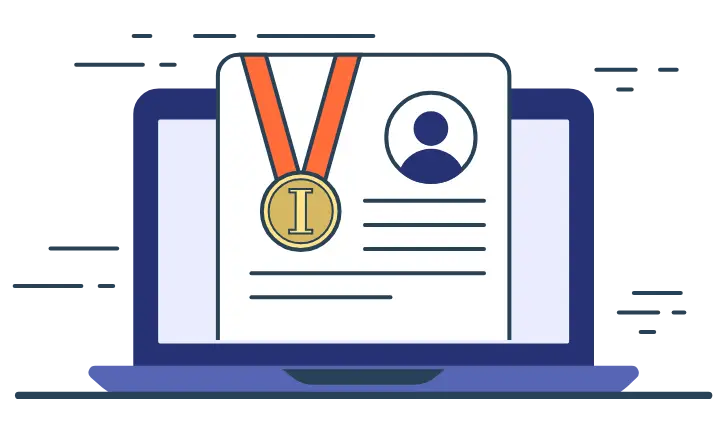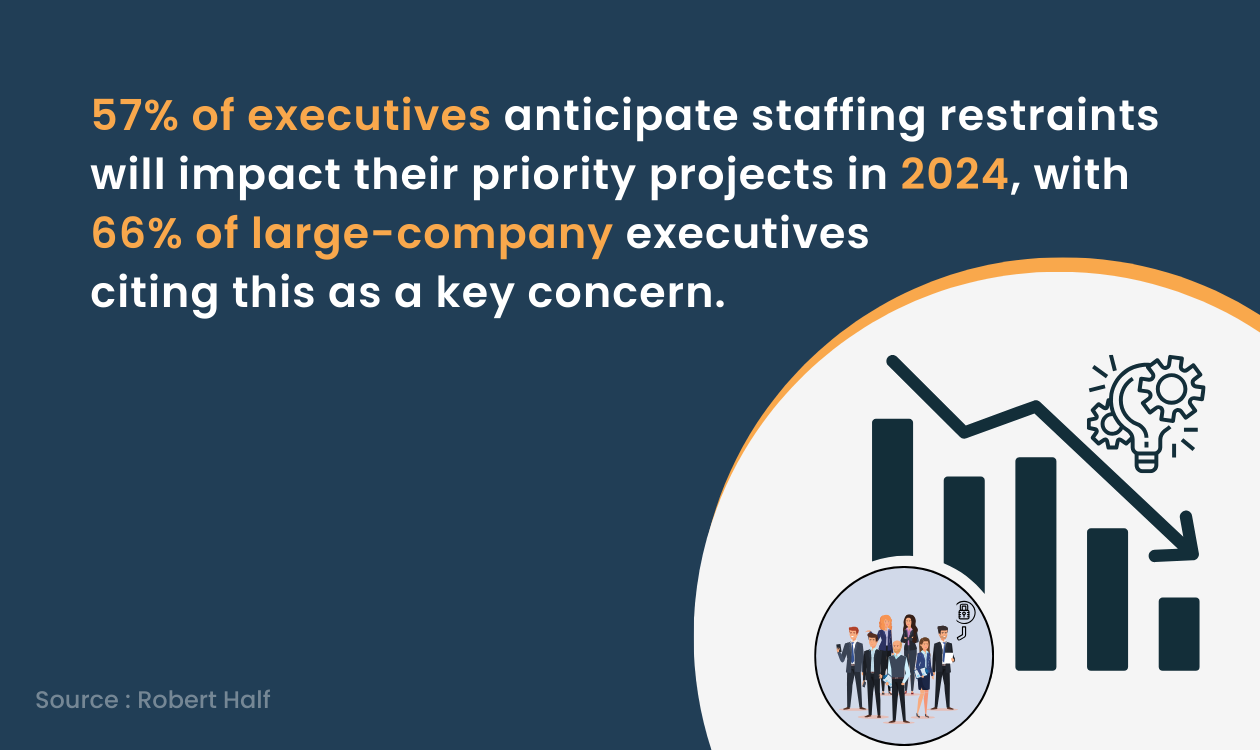Conducting an executive interview is far from a routine checklist exercise; it’s where strategic vision meets evaluative precision. You’re not merely filling a role; you’re selecting a leader who will drive critical initiatives and shape the future of your organisation.
Think of it as a strategic talent search, one that reveals how seasoned executives have delivered transformational change, led diverse teams and stayed ahead in an ever-evolving business landscape.
To succeed, you need incisive, scenario-based questions that uncover how these leaders have navigated complexity, aligned with long-term goals, and thrived in pivotal moments. You’re looking for visionary thinkers individuals who don’t just respond to challenges but consistently convert them into opportunities.
Ready to identify your next influential leader? In this guide, we walk through the seven essential stages of the executive interview process, offering best practices to help you assess and secure the right leadership talent for your organisation’s future.
7 Key Stages to Conducting an Effective Executive Interview Process
1. Defining the Leadership Mandate for Executive Roles
The first step in any successful C-suite recruitment is defining the leadership mandate. This involves close collaboration between the executive search firm, the board, the CEO, and other key stakeholders. The leadership mandate outlines the core responsibilities of the executive role, strategic objectives, and the leadership qualities required to meet these objectives.
For example, if the company is undergoing digital transformation, the leadership mandate would emphasise a leader’s ability to lead technological change while ensuring alignment with the company's long-term strategy. Similarly, if the company is focused on market expansion, the leadership mandate would require the candidate to have a deep understanding of international markets and the ability to drive revenue growth in new regions.
This phase also considers budget management and the executive's experience managing large-scale financial decisions. At the C-suite level, especially for roles like CFO or COO, P&L responsibilities are critical. The leadership mandate must include expectations on how the new leader will manage the company's financial health, allocate resources effectively, and ensure a return on investment (ROI) in various strategic initiatives.
2. Conducting In-Depth Research on Executive Leaders
Once the leadership mandate is established, executive search firms conduct deep-dive research into potential executive leaders. This research is much more detailed than traditional recruitment methods. Firms evaluate the leader’s career trajectory, decision-making history, and impact on company growth in previous roles. For instance, have they successfully managed a digital transformation? Have they led a company through an industry disruption?
According to Robert Half, more than 57% of executives expect staffing issues to hinder their key projects in 2024. This concern is even more pressing for large companies, where 66% of executives view this as a major challenge.
Understanding how the executive leader has managed team dynamics and influenced company culture is essential. Leadership isn't just about making decisions; it's about involving the entire organisation in those decisions. Executive search firms look at how leaders have managed teams across diverse functions and geographies, whether they foster an inclusive and innovative culture, and how they balance internal team needs with external market pressures.
Recruiters also focus on how the executive leader has handled technology adoption. In today's business world, understanding and implementing new technologies - whether AI, automation, or digital platforms - is crucial for long-term success. The executive's technological aptitude can directly influence the company's competitiveness and ability to innovate in a rapidly evolving market.
3. Structuring Multi-Stage Interview Process for C-Suite Roles
C-suite interviews are typically divided into multiple stages, each focusing on different aspects of the executive's skills and potential fit.
Initial Meeting
In this stage, recruiters assess the executive leader’s overall leadership presence and alignment with the company's strategic goals. The leader’s understanding of the industry, market trends, and financial landscape is critical. Discussions often revolve around the leader’s vision for growing the business, improving profitability, and enhancing market share.
Middle Stage
This stage is where things get more complex. Executive recruiters present real-world challenges that the company might face - such as a budget cut, a sudden shift in market dynamics, or a large-scale technology integration. The purpose is to assess how the executives would navigate these scenarios.
Final Round
In this phase, executives meet with the board, investors, and other key decision-makers. Here, the focus shifts to evaluating their stakeholder management skills and their ability to align multiple interests with the company's strategic direction.
A critical element in this stage is ensuring that the executive can manage both internal team members and external stakeholders - balancing the interests of the board, investors, and senior leadership. Cultural alignment is a key topic, as the executive's ability to fit within the company's existing culture while also fostering growth and innovation is essential.
4. Evaluating Leadership Competencies for Senior-Level Executives
Executive recruiters assess several key leadership competencies during the executive search process, each of which is vital for the success of a C-suite executive:
Strategic Vision and Market Insight
The ability to anticipate shifts in the market, respond to industry trends, and adjust the company's strategy accordingly. For example, can the executive steer the company through a post-pandemic economy or navigate global supply chain disruptions?
Crisis Management and Financial Leadership
Assessing how the executive has managed crises in the past, including economic downturns or major financial setbacks. Can they effectively manage budgets, cut costs where necessary, and still drive growth?
Cultural and Team Leadership
In today's business environment, leading diverse teams across global markets is critical. Can the executive create an environment of innovation, accountability, and inclusivity? Do they foster a culture that supports technology adoption and continuous improvement?
5. Crafting Strategic Questions for Executive Interviews
The questions asked during C-suite interviews are designed to uncover how executive leaders think, respond in challenging situations, and approach long-term challenges. Here are a few examples:
Budgeting and Financial Strategy - How do you approach cost management during an economic downturn while still maintaining growth targets?
Technology Adoption - Can you provide an example of leading a company through a significant technology transition? How did you manage team adoption, budget constraints, and operational disruption?
Cultural Leadership - How have you successfully integrated new team members into a company culture while balancing diversity, inclusion, and innovation?
6. Post-Interview Evaluation and Consensus Building
Once interviews are complete, it’s essential to gather comprehensive feedback from all key stakeholders. This phase isn't just a simple review - it's a detailed assessment of each leader’s performance across all interview stages.
Feedback Gathering
Executive recruiters consolidate feedback from interviewers, highlighting the leader’s strengths, weaknesses, and overall fit for the executive role. This feedback includes insights into how well the executive aligns with the leadership mandate, their cultural fit, and their capacity to drive the company forward.
Consensus Building
Organise a debrief session with senior leaders, board members, and other stakeholders to discuss findings and opinions. The aim is to reach a consensus on the best leaders. This discussion might involve ranking executives based on key competencies, evaluating their ability to navigate future executive search firm challenges, and ensuring they align with the company's strategic direction.
Key Focus Areas
-
Alignment with company goals and culture.
-
Ability to manage complex projects and lead teams.
-
Strategic thinking and decision-making capabilities.
7. Make Informed Decisions and Plan the Onboarding Process
The final step is to make a well-informed decision, select the top leaders and initiate the offer negotiation process. Once the offer is accepted, the focus shifts to ensuring a seamless onboarding experience.
Offer Negotiation
Ensure clarity in offer terms and align the executive’s expectations with the company's goals. Discuss compensation, benefits, and other incentives, keeping the long-term objectives in mind.
Structured Onboarding
Develop a comprehensive onboarding plan that outlines the new leader's responsibilities from day one. This plan should include regular check-ins, clear performance goals, and integration with key teams. Focus on aligning them with the company culture, strategic objectives, and financial expectations.
Conclusion
Each stage of the executive interview process is crucial in selecting leaders who align with your company’s vision and can drive growth and innovation. Master executive recruitment through our Step-by-Step Guide to Executive Search.
iSmartRecruit’s Executive Recruiting Software simplifies this process by providing in-depth insights into executive profiles, customisable interview stages, and streamlined stakeholder feedback. With data-driven decision-making and easy executive comparisons, the platform ensures you select the best leaders for high-level assignments. Ready for a better way to hire? Book your demo now and discover how iSmartRecruit can help you find your next business leader.
Frequently Asked Questions (FAQs)
1. What are the key stages of an executive interview process?
The executive interview process typically involves seven stages: defining the leadership mandate, preparing the interview panel, structuring the interview format, assessing competencies, asking strategic questions, evaluating cultural fit, and negotiating the offer.
2. How do you assess cultural fit in an executive interview?
To assess cultural fit, ask situational questions related to leadership style, team dynamics, adaptability, and alignment with your organisation’s values.
3. How can technology improve executive interviews?
Using an ATS like iSmartRecruit can streamline interview scheduling, track candidate feedback, centralise notes, and reduce unconscious bias through structured scoring.
4. What are common mistakes in executive interviews?
Common mistakes include lack of preparation, unstructured questioning, focusing too much on technical skills, and failing to assess leadership style or cultural alignment.














